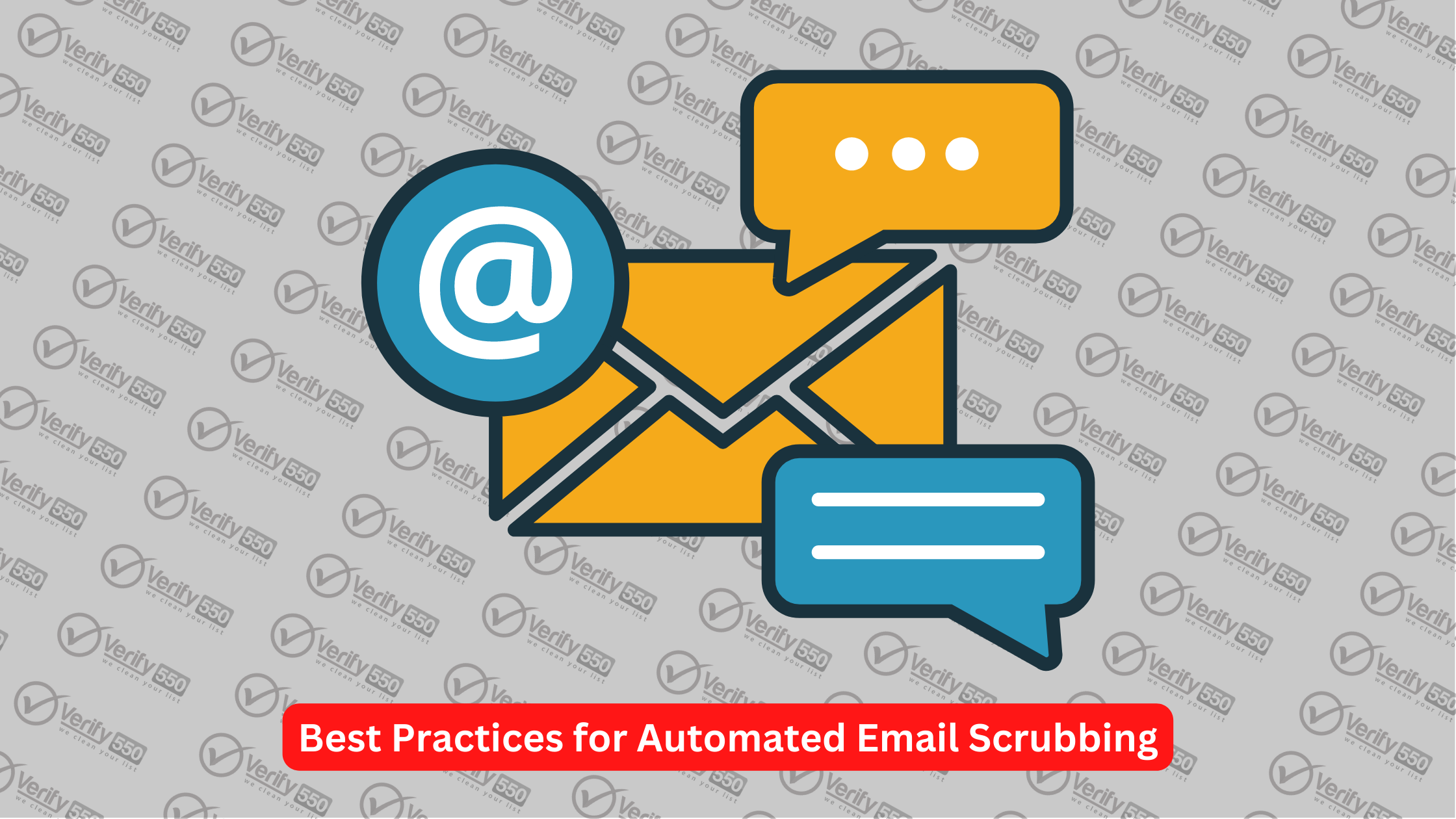Best Practices for Automated Email Scrubbing
It’s essential to scrub your email list regularly, especially when sending out email campaigns, as it can have a drastic effect on your ROI. If your emails aren’t opened, bounced, or filtered into spam folders, then you’re wasting both time and resources on a low-quality email list. You won’t be able to turn leads into customers if your emails are never delivered and read.
Email scrubbing is the process of removing inactive or invalid email addresses from your list. This practice helps to maintain a clean list that is free of spam traps and uninterested subscribers who may flag your emails as spam. This can help to improve deliverability and ROI, as well as avoid damaging your sender’s reputation.
In this article, we’ll discuss why email scrubbing is important, which emails to scrub from your list, and how Verify550 automates this process for you.
What exactly is email scrubbing?
The term “scrubbing” refers to the process of eliminating any and all dead, invalid, irrelevant, or unengaged email addresses from a list. By getting rid of inactive users, you can be sure that you are only sending emails to people who have asked to be on your mailing list.
A smaller, higher-quality email list is the result of email scrubbing. A smaller, well-maintained email list is far superior to a large, irrelevant one. Improved deliverability, open rates, and click-through rates are additional benefits of cleaning email lists. Therefore, email cleaning boosts conversions and the return on investment for campaigns.
When purging your email list, you may want to avoid keeping these addresses:
- Bounced emails are caused by inactive or invalid email addresses.
- Poorly vetted email lists sourced from vendors or known spam traps
- Members of the public who did not voluntarily sign up for your mailing list
- Users who haven’t logged in for a while or who haven’t made any
- Performing poorly in open and click-through rates
- Addresses that have unsubscribed or reported you as spam
- Duplicated email addresses
To what extent should you clean your email list?
How often and when should you purge your email list? Depending on the nature of your company and mailing list, different strategies will apply. We recommend that you perform a deep cleaning of your email list at least once a year. Some indicators that it’s time to prune your email list are:
The return on investment (ROI) from sending emails is decreasing.
Poor email deliverability.
It seems that a lot of your messages are being blocked as spam and never reaching their intended recipients.
The bounce rate is exceptionally high because email servers block messages with invalid email IDs.
If a lot of your emails bounce back, email service providers (ESPs) turn on their SPAM filters, which makes it more likely that all of your emails will be marked as spam.
Your open (and click-through) rates for emails are low.
The open rate of your email is the proportion of recipients who click on the link to read the message. The CTR measures how many recipients of your email actually clicked on a link within it. The subject lines and contents of emails both play a role in how many times they are opened. Even so, email deliverability (the percentage of people who actually read your emails) is greatly impacted by how clean your list is.
You see a rise in unsubscribes or SPAM complaints.
You need to determine whether your subscribers are uninterested due to low-quality content, an excessive number of emails, or the fact that your offering is irrelevant to their needs. If the first is true, run a campaign to get them interested again and make sure your email marketing fits their tastes and needs. If the second is true, those addresses must be taken off the mailing list right away to keep the credibility of the senders from being damaged irreparably.
How to keep email lists clean
- Double-opt-in signups. If you want someone to join your email list, you should have them confirm their subscription via a link in an email you send them. Double-opt-in procedures like these help filter out non-existent email addresses from your mailing list.
- Always include an unsubscribe link in emails. If you’re sending out emails, the CAN-SPAM Act mandates that you make it easy for people to remove themselves from your mailing list. Your email list’s “unsubscribe” button should be prominently displayed and simple for anyone to use.
- Remove inactive subscribers: Inactive subscribers haven’t opened one of your emails in six months or more. Get rid of them so you don’t get spam complaints and can improve your sender reputation.
- Use subscribers’ interests and preferences to segment your email lists and send more relevant emails. Open rates, interaction, and sales will all improve thanks to this customization.
- Cleanse your email list: Remove inactive or irrelevant subscribers regularly. A well-maintained mailing list is a prerequisite to having an active, relevant, and highly-convertible emailing list of subscribers.
—
If you’re looking for email list validation and verification services, we've got you covered.
verify550.com/ is your one-stop shop for all your email list needs. We have the ability to validate and verify any email lists you have, so you can be confident that your customers are going to get where they need to go.
We'll take care of the dirty work so that you don't have to—and we'll do it quickly, so you can focus on what matters most: getting results!

